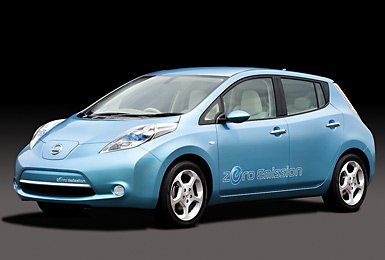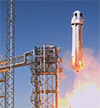Market Report: Automotive Sector Prepares for Sales Uptick
After experiencing major bumps in the past few years, the automotive industry is retooling for a brighter future.
March 2011

"We've started to see increases in sales last year and going into this year," says Kim Hill, director of the Sustainability and Economic Development Strategies Group at the Center for Automotive Research in Michigan. Vehicle sales could hit the 13 million range this year, he says, after falling to a little more than 10 million in 2009.
An annual sales figure of 13 million is still by no means stellar, considering that U.S. car and truck sales totaled about 17 million every year from 1999 through 2006, according to Ward's Automotive Group statistics. Still, says Hill, "This is a really good trend."
Ward's January 2011 sales tally is an indicator of that good trend. Overall U.S. light vehicle sales were up by more than 17 percent over the previous January. General Motors' sales grew by nearly 23 percent, and Chrysler's by nearly 24 percent. In fact, with the exception of Mazda and Isuzu, all major automakers reported a better first month of 2011 than of 2010.
Adjusting to the Uptick
Don't expect a truckload of announcements of brand-new auto assembly plants anytime soon, Hill cautions. For the most part, there's plenty of manufacturing capacity out there. "Over the last few years, a lot of facilities closed or severely curtailed their production, at some points by 50 percent," he points out. "We don't see another era of rapid expansion and building of assembly plants in the near future."
What will be most interesting to watch is what happens in the supplier sector as auto assembly ramps back up. When the chill in assembly hit, it had a major ripple effect in the supplier system. "Some were able to weather the storm, some ended up merging with other suppliers, and some suppliers simply folded up shop and went away," Hill says. Indeed, more than five dozen major suppliers hit bankruptcy in 2009. "Suppliers that are still around have found that they have become much more efficient."
The question is, after all the turmoil, can the supplier network handle the uptick in business? There are scattered reports of difficulties in this regard, causing temporary closures at Ford, Chrysler, and Volkswagen plants unable to take delivery on a sufficient flow of components to keep the assembly lines rolling. Microchips have been in short supply, and some resins, too. Most of the problems were solved relatively quickly, as suppliers adjusted and competitors moved in to grab market share.
That doesn't mean the issue won't arise again as the thaw continues. For some automotive suppliers, it's just a matter of taking production lines out of mothballs. But if an up-and-coming supplier wants to grow into the new opportunities, it might require capital that remains somewhat elusive.
On the assembly side, there is generally plenty of capacity in existing plants to handle a significant boost in demand. There may be exceptions here and there, though. For example, industry followers have heard that Hyundai may be considering adding to its North American manufacturing capacity, and similar rumors have followed Volkswagen.
Project Announcements
Toyota Motor Manufacturing Expands Georgetown, Kentucky, Assembly Operations
11/24/2025
Carlex Glass America Expands Nashville, Tennessee, Manufacturing Operations
11/23/2025
Scout Motors Plans Charlotte, North Carolina, Headquarters Operations
11/15/2025
Norway-Based Vianode Plans St. Thomas, Ontario, Canada, Operations
11/14/2025
Judco Manufacturing Plans Snow Hill, North Carolina, Headquarters-Research Operations
10/24/2025
Geotab USA Plans Madison Heights, Michigan, Operations
10/09/2025
Most Read
-
Rethinking Local Governments Through Consolidation and Choice
Q3 2025
-
First Person: Filter King’s Expansion Playbook
Q3 2025
-
Rethinking Auto Site Strategy in the Age of Tariffs and Powertrain Shifts
Q3 2025
-
Lead with Facts, Land the Deal
Q3 2025
-
How Canada Stays Competitive
Q3 2025
-
America’s Aerospace Reboot
Q3 2025
-
The Permit Puzzle and the Path to Groundbreaking
Q3 2025



